The Making of a Monster: How Jews created the Mengele Legend
By Hadding Scott
Written especially for Jan27.org
Other than Adolf Hitler, Josef Mengele may be the only figure from National-Socialist Germany targeted for demonization with an entire major motion-picture while he was still alive and at large. The Boys from Brazil in 1978, based on Ira Levin’s 1976 novel, portrays a “Josef Mengele” that is pure, crude caricature.
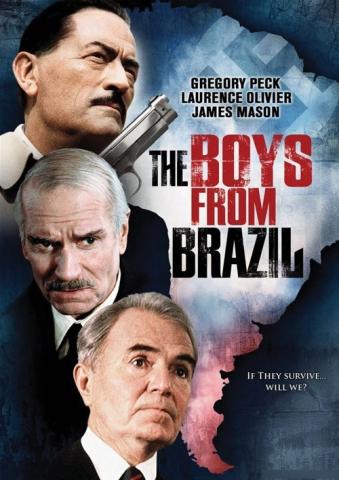 Just think of it. You are living in deliberate obscurity in South America, trying to avoid trouble, while a character that is supposed to be you, bearing your real name, is portrayed through the absurd histrionics of Gregory Peck as a vintage 1943 Hollywood-style “Nazi” sadist and diehard Hitler-loyalist who is also the ruthless kingpin of a vast and well funded (and entirely fictitious) criminal conspiracy to take over the world.
Just think of it. You are living in deliberate obscurity in South America, trying to avoid trouble, while a character that is supposed to be you, bearing your real name, is portrayed through the absurd histrionics of Gregory Peck as a vintage 1943 Hollywood-style “Nazi” sadist and diehard Hitler-loyalist who is also the ruthless kingpin of a vast and well funded (and entirely fictitious) criminal conspiracy to take over the world.
To emphasize the sinister character of the chief conspirator, the “Nazi-hunter” played by Laurence Olivier cites as alleged historical fact that you “ … killed 2 ½ million people, experimented on children, Jewish and non-Jewish, using twins mostly, injecting blue dyes into their eyes to make them acceptable Aryans, amputating limbs and organs from thousands, operating without anaesthetics….”
The average movie-viewer of course will fail to ask whether there is even a shred of physical evidence for any such accusation against you. (There is not.) The average viewer will assume that if it is being cited as history, even in a largely fictitious story, it is probably true.
Meanwhile, in your efforts to avoid attracting attention you have had to relocate from Germany to Argentina to Paraguay to Brazil, have stopped using your real name, and have even given up your life’s work of practicing medicine (the university that issued your M.D. and Ph.D. having revoked them in 1964) to live in near-poverty working as a farmhand.
So who is the persecutor and who is the persecuted in this scenario? To answer this question it helps to examine what is known about Mengele’s life and background.
Background and Character
Josef Mengele (1911-1979) was the oldest of three brothers. Their father built the largest farm-machinery manufacturing company in Germany, Karl Mengele & Sons of Guenzburg, Bavaria. Upon Karl Mengele’s death in 1959 the company had more than 2000 employees worldwide.

1932 Stahlelm campaign vehicle promoting the election of Duesterberg for Reich president.
The Mengele family was conservative. Karl Mengele had fought in the First World War and was at various times a member of the Stahlhelm, the Bund der Frontsoldaten, and the conservative nationalist party, the DNVP. German Wikipedia says: “He is described as conservative, but is not considered an anti-Semite.”
In 1932 Karl Mengele made his factories available for campaign appearances by Adolf Hitler, but this was in conformity with the requirements of the Harzburg Front, an alliance between the NSDAP, DNVP, and Stahlhelm. Karl Mengele joined the NSDAP only in May 1933, after Hitler had come to power.
Josef Mengele in 1924 joined a Pan-German youth-group, der Grossdeutsche Jugendbund, and in the period 1927-1930 was Ältestenführer of the Guenzburg chapter. The GDJ was not National-Socialist but “revolutionary conservative” in outlook.
The family-background and upbringing of Dr. Josef Mengele is thus considered to be not so much National-Socialist as Catholic conservative, with political leanings toward the Deutschnationale Volkspartei rather than the NSDAP.
This is unlike the “Mengele” portrayed in The Boys from Brazil, who is supposed to have been an early supporter of Adolf Hitler.
It is true that in 1937 Josef Mengele was an assistant to the famous physical anthropologist Otmar von Verschuer at the Kaiser Wilhelm Institute (now renamed the Max Planck Institute) but there was nothing disreputable about race-based anthropology at the time; only the propaganda of the Second World War, and the echoes thereof, have made it disreputable. The perfect respectability of this kind of work at that time is evident in the fact (widely publicized by Jewish author Edwin Black) that it received funding from the Rockefeller Foundation.
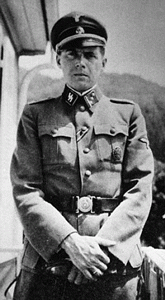
Right: Mengele in his SS uniform
When war came and his country needed him, Josef Mengele volunteered for the Waffen-SS, and served as a medical officer in the SS Panzer-Division “Viking.”
Robert Jay Lifton, a Jewish psychiatrist who wrote The Nazi Doctors, observed about Mengele that there were “no apparent signs of aberrant behavior prior to the Nazis and Auschwitz.” (NY Times Magazine, 21 July 1985)
After being wounded on the Eastern Front Mengele was reassigned from May 1943 to January 1945 as the camp physician in Auschwitz, where Jewish physicians worked under his supervision. It is in this setting that monstrous accusations have been made against Mengele.
Robert Jay Lifton admits that there is no consistency between the Josef Mengele that is known outside of Auschwitz and the monster that he was made out to be. More than that, Lifton comes close to admitting that the portrayal of Mengele by supposed witnesses at Auschwitz is so terrible that it cannot be real.
For Mengele has long been the focus of what could be called a cult of demonic personality. He has been seen as the embodiment of absolute evil, a doctor pledged to heal who kills instead. But this demonization made him something of a deity, a nonhuman or even superhuman force, and served as a barrier to any explanation of his behavior.
Rather than admit that this demonization might be a distortion, however, Lifton takes his cue from fellow Jew Hannah Arendt, by trying to explain how a man (like Eichmann or Mengele) who is to all appearances modest and mild and not a monster might nonetheless have done monstrous things. To support this position, Lifton hypothesizes that there were in effect two Mengeles.
She is surely correct in her claim that an ordinary person is capable of extreme evil. But over the course of committing evil acts, an ordinary person becomes something different. In a process I call ”doubling,” a new self takes shape that adapts to the evil environment, and the evil acts become part of that self.
Given the Jewish imperative of maintaining the accusations against Mengele contrary to all evidence of what kind of man Mengele was, psychiatrist Lifton invents the “doubling” hypothesis. Indirectly Lifton thereby admits that it is unlikely that the Mengele known outside of Auschwitz did what the “Mengele” of Holocaust literature is supposed to have done.
Accusations
For the monster that Holocaust-propaganda eventually made him out to be, Josef Mengele was the focus of surprisingly little attention in the years immediately following the Second World War.
There was this. In 1948, International Universities Press, a publisher mainly of Freudian literature, published Jewish gynecologist Gisella Perl‘s I was a Doctor in Auschwitz. This seems to be by far the earliest publication of any accusation against Mengele. In the publicity about Mengele following The Boys from Brazil, Perl received attention again.

“Dr. Mengele told me that it was my duty to report every pregnant woman to him,” Dr. Perl said. “He said that they would go to another camp for better nutrition, even for milk. So women began to run directly to him, telling him, ‘I am pregnant.’ I learned that they were all taken to the research block to be used as guinea pigs, and then two lives would be thrown into the crematorium. I decided that never again would there be a pregnant woman in Auschwitz.”
SHE INTERRUPTED the pregnancies, she said, “in the night, on a dirty floor using only my dirty hands.” “Hundreds of times I had premature deliveries,” she said. “No one will ever know what it meant to me to destroy those babies, but if I had not done it, both mother and child would have been cruelly murdered.” [NY Times, Nadine Brozan interviews Gisella Perl, 16 November 1982]
Perl does not say how she knew that the pregnant women and their infants were all being killed. The rumor, however, fits the pattern described in Leon Festinger‘s 1957 tome A Theory of Cognitive Dissonance: the theory is that rumors of secret horrible deeds are invented and eagerly believed as a way of explaining away why somebody that one expects to be hostile offers kindness instead. According to Festinger’s theory, nasty stories about Mengele would have been caused by his being too nice.
If Perl is giving an accurate account of her own actions, then she is a monster herself, having used a rumor as a justification for some huge number of infanticides.
L.A. Rollins (reviewing another book that relies on Perl as a source, for the Journal of Historical Review) notes that Perl’s book includes unbelievable details, like the following:
Then, one day, Dr. Mengele came to the hospital and gave a new order. From now on Jewish women could have their children. They were not going to be killed because of their pregnancy. The children, of course, had to be taken to the crematory by me, personally, but the women would be allowed to live. I was jubilant…. I had 292 expectant mothers in my ward when Dr. Mengele changed his mind. He came roaring into the hospital, whip and revolver in hand, and had all 292 women loaded on a single truck and tossed, alive, into the flames of the crematory. [Gisella Perl, I Was a Doctor in Auschwitz, 1948: pp. 163-164]
“Whip and revolver in hand”! That is quite a bedside manner, and certainly a remarkable approach to avoiding panic, which would have to be a concern for anyone working in a concentration camp. Rollins comments:
I’m sure that tossing 292 women, alive, “into the flames of the crematory” was a helluva lot easier said than done. And Gisella Perl did not say that she saw this improbable deed done.
She also cannot seem to make up her mind whether the supposed killing of pregnant Jewish women was overt or secret. In the interview for the New York Times in the 1980s it was a secret that she discovered, whereas the “Mengele” in her book made no attempt to avoid frightening anybody.
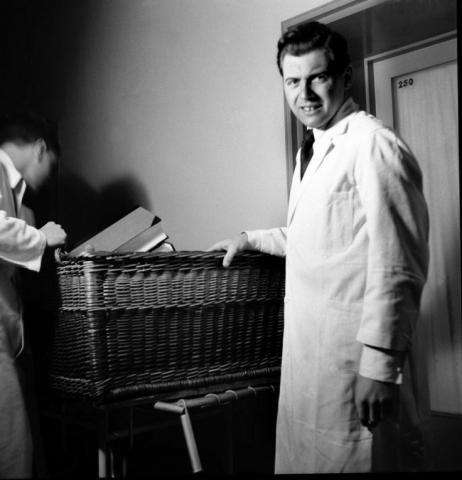 A rare photo of Mengele in his white doctor’s coat.
A rare photo of Mengele in his white doctor’s coat.Perl’s accusations seem not to have had much influence when her book first appeared. 1948 was the beginning of the Cold War, so that efforts to perpetuate anti-German propaganda at this time were out of step with the prevailing mood in the United States.
Mengele was not initially wanted as a war-criminal. The first time that Mengele’s name appeared in the New York Times was 19 June 1960, during the show-trial of Adolf Eichmann.
It was also in 1960 that Miklos Nyiszli‘s ostensible memoir, Auschwitz: A Doctor’s Eyewitness Account , appeared, claiming that the author had been Mengele’s assistant. The book contained many defamatory details about Mengele and about the Sonderkommando, but even mainstream historians today admit that Nyiszli’s book lacks credibility, especially because his physical description of Krema II, where he claimed that he’d had an office, was significantly inaccurate.
On 3 July 1960 an Argentine judge ordered Mengele’s arrest, following a request for extradition to West Germany, but Mengele had already left Argentina. In this period Mengele was being accused, in addition to deciding who would be gassed (in a camp where it is now known that no gassings occurred), of administering lethal injections of gasoline, phenol, and air as supposed experiments.
German Wikipedia says:
Mengele rückte erst während der frühen 1960er Jahre im Zuge der Ermittlungen zu den Auschwitzprozessen ins engere Blickfeld der Strafverfolger. Zuvor hatte er bereits einige Jahre unter seinem echten Namen ungestört in Argentinien gelebt.
Mengele first entered the narrower focus of criminal prosecutors in the early 1960s in the course of the testimonies for the Auschwitz Trials [in Frankfurt]. Previously he had already lived under his own name several years in Argentina without being disturbed.
The prime mover of those Frankfurt Auschwitz trials was the Jewish attorney-general of Hesse, Fritz Bauer.
Interest in Mengele subsided again, and was not put into high gear until the mid-1970s, in the period following the resignation of Richard Nixon, when the Jewish cultural revolution in the United States had triumphed. The renewed effort to demonize Mengele started with William Goldman‘s Marathon Man in 1974, featuring a villain that was supposed to resemble Mengele vaguely, followed by Ira Levin‘s The Boys From Brazil, which outrageously uses Mengele’s name.
There are signs of a tendency from the mid-1970s until 1985, with the extraordinary demonological status that was given to Mengele through novels and movies in that period, to exaggerate the man’s importance retroactively. By exaggerating the past attention given to Mengele as a supposed monster, the present fixation could be made to seem less absurd.
Jack Anderson‘s column of 20 December 1977 claims that a nickname for Mengele, “Angel of Extermination,” is recorded in the Diary of a Young Girl that has been attributed to Anne Frank. The name Mengele however does not turn up in a search of the PDF of the “definitive edition” of the diary, and the only “angel” in the book is Anne Frank’s grandma. One would not expect any reference to Mengele in that diary anyway, since it is supposed to be a record of life in the “secret annex,” ending with the family’s removal to internment camps. The claim that Anne Frank’s diary refers to Mengele is therefore obvious misinformation from Jack Anderson (although repeated on 11 February 1985 by UPI’s senior editor Arnold Sawislak).
The New York Times’ columnist Ralph Blumenthal wrote in 1985 that Mengele was incriminated with medical atrocities by the forced confession that was attributed to Rudolf Hoess in 1947 while in Polish Communist custody (R. Blumenthal, New York Times, 13 May 1985). In fact, the online searchable PDF of Hoess’ forced confession does not show the name Mengele even once.
The whole subject of Josef Mengele has been permeated with recklessness and exaggeration.
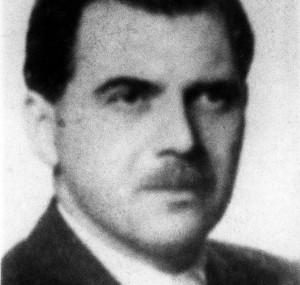
Mengele in 1956; if so, he would have been 45 years old.
The Boys from Brazil in 1978 had portrayed “Mengele” as still living in Paraguay with an extraordinarily opulent lifestyle. In November 1984 Brooklyn DA (later Congresswoman) Elizabeth Holtzman traveled to Paraguay with an entourage including the future General Counsel of the World Jewish Congress, Menachem Rosensaft, in search of Josef Mengele. The government of Paraguay informed these Jews that Mengele had come to Paraguay in 1959 but was no longer in the country. (NY Times, 23 November 1984)
In reality Josef Mengele had finished his life in humble circumstances, and had been dead since 1979, when he suffered a stroke and drowned while swimming at the beach.
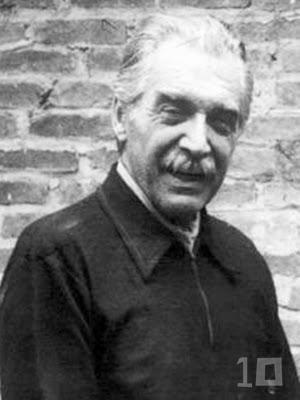 Mengele in the 1970s, possibly shortly before his death
Mengele in the 1970s, possibly shortly before his deathAll this fuss over a man who had been dead for several years left some people looking very foolish. Ralph Blumenthal wrote in the New York Times in 1985:
The worldwide interest in the Mengele case has produced a flood of misinformation and possibly deliberate disinformation that has clouded the search with bogus sightings and photographs – including, apparently, even the pictures on widely circulated wanted posters. [R. Blumenthal, New York Times, 13 May 1985]
Looking particularly foolish in 1985 was Simon Wiesenthal. More than two years after Mengele’s death, the great Nazi-hunter claimed that he was “closing in on Mengele.”
Nazi-hunter Simon Wiesenthal says he is closing in on Josef Mengele, former chief doctor at the Auschwitz concentration camp, and expects to capture him within several weeks. […] The Nazi-hunter said Mengele was in a Central American country but would not identify it. [AP 21 January 1982]
Totally wrong, and this was not an isolated instance. The character representing Wiesenthal (“Ezra Lieberman” played by Laurence Olivier) in The Boys from Brazil is said to be a bungler who, in the case of Mengele, finally happens to get it right, but Wiesenthal does not get it right. Ralph Blumenthal’s obituary of Wiesenthal in the New York Times implies that Wiesenthal was not just a bungler but a conman:
Over the years, Mr. Wiesenthal publicized a host of detailed and spurious “sightings” of Mengele in Paraguay, Egypt, Spain and a tiny Greek island, Kythnos. Benjamin Varon, former Israeli ambassador to Paraguay, publicly suggested that Mr. Wiesenthal might have been embellishing to coax funds from contributors. His comments, in a Jewish magazine, Midstream, in 1983, provoked a rebuke from Mr. Wiesenthal’s supporters, who accused him of “profaning” Mr. Wiesenthal’s “sacred mission.” [NY Times, 21 September 1993, Ralph Blumenthal, obituary of Simon Wiesenthal].
The revelation of the reality about Josef Mengele created one of those moments when it was impossible not to admit that the “Holocaust” included some exaggerations if not outright lies.
On 2 July 1985, Jeffrey Hart, a newspaper-columnist who is also a professional historian, went into damage-control mode. Hart recognized that the claim that a trained medical doctor had tried to turn brown eyes blue by injecting dye into them was unlikely, but he did not want to call the people who had been saying this liars. :
But, as a professional historian, I would urge some caution about many of the anecdotes that are being routinely accepted as fact. They may be true. He may, for example, have tried in his “experiments” to have attempted to inject blue dye into brown eyes in order to make them more “Aryan.” My own historical hunch is that much of this kind of thing is mythology, concocted as a kind of metaphor to express the almost supernatural horror of the man Mengele actually was. Mengele was a monster of theory.
[…]
It is probably more comfortable to think of him as a thug or as an ordinary sadomasochist. As a Richard Speck in Nazi uniform. I do not think so. I doubt the story that he killed a woman by crushing her throat with his boot. I tend to believe the account that when he gave a child an experimental injection he said, “Hold still, my child. It will be all right.” [King Features Syndicate, Jeffrey Hart, 2 July 1985]
So, according to Jeffrey Hart, the “witnesses” who make these amazing claims about Mengele are probably lying, but somehow still telling the truth, because those absurd stories, Hart would have us believe, are metaphors for some essential truth about Mengele that could not be expressed in words. This is the logic of someone for whom simply saying that the witnesses lied is not an option. But at the same time he is admitting that they most likely did lie.
In that context, Hart affirms his belief in the gas-chamber story:
There is no doubt that as top physician at Auschwitz he signaled tens of thousands of people to a horrible death in the gas chambers.
The worst of the accusations against Mengele is not that he carried out absurd pseudo-medical experiments, but that he was responsible for indicating who at Auschwitz would be gassed. The number typically attributed to him is 300-400 thousand.
But this is precisely the claim about Auschwitz that, since 1985, has been most conclusively disproven, thanks to Fred Leuchter, who has demonstrated that the supposed gas-chambers at Auschwitz are structurally unsuited for that purpose, thanks to Walter Lüftl the former chairman of the Austrian Chamber of Engineers, whose Lüftl Report points out that the properties of Zyklon-B as a fumigant make it unsuitable for use as described in the so-called eyewitness accounts, and to Germar Rudolf, who has checked the quantities of cyanide-residue in the putative gas-chambers. Above all, thanks to Professor Robert Faurisson, who had the idea of commissioning experts to examine the gas-chambers, and to Ernst Zündel, who recognized the merit of Faurisson’s idea and put it into action.
Category
World War II- 492 reads









